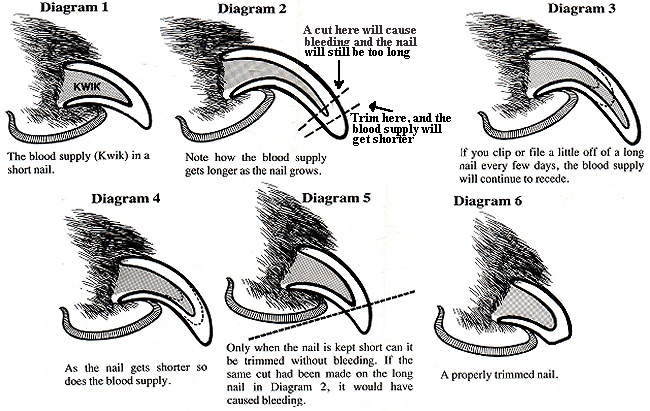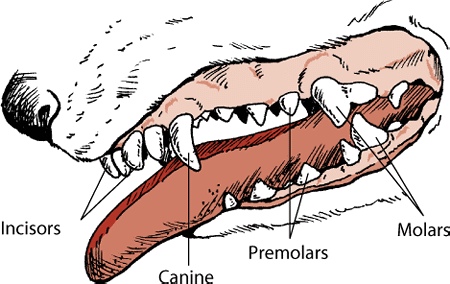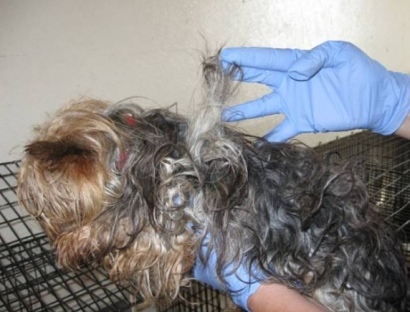Information
-
Applicant name:
-
Conducted on
-
Location
-
Prepared by
-
Applicant Signature
-
Preparer Signature
-
http://www.aphis.usda.gov/animal_welfare/downloads/Animal%20Care%20Blue%20Book%20-%202013%20-%20FINAL.pdf
Background and General Facility Questions
-
Have you been licensed with USDA-APHIS-Animal Care before?
-
Can you tell me what happened to cause this failure to renew your license?
- didn't need a license until the Pet Rule
- Forgot to renew when it was time
-
Are you required to have a state issued license?
-
Tell me about your past inspection reports – was anything cited, how were the problems fixed?
-
Were there any minor issues or concerns that your inspector discussed with you previously but did not put on the report?
-
What measures have you taken to fix those issues/concerns?
-
Do you understand that there are no “teachable moments” or “minor issues” for these prelicense inspections?
-
What type of breeding dogs you mostly raise?
- Large Breed
- Medium sized
- Small Breed
-
Are these all of the animals and locations you are using or intending to use for regulated purposes?
-
Have you ever pled ‘no contest’ or have you ever been found to have violated any Federal, State, or local laws or regulations pertaining to animals?
-
Would you please explain the circumstances around your plea?
Animals Raised/Kept Inside the Home or Animals Cohabitating with Humans
-
Do you keep or raise animals in your home?
-
Are these animals limited to a specific area of the home or do they have unlimited access? Or are placed in a room that is set aside specifically for the animals’ – whelping room, nighttime sleeping room, etc.?
-
Tell me about any enclosures you may use for the animals – (e.g. “vari kennels”, playpens, stack caging).
-
Are they large enough to meet the floor space requirements of a primary enclosure?
-
If you do – do you understand that this animal area will need to meet the requirements of indoor housing including surfaces, ventilation, etc.? (need to refer to Indoor housing facility questions at this point)
-
Do you understand that we will need to inspect all areas housing animals and items associated with their care?
-
Do you understand that the areas of the home that are available to the animals must be kept clean and safe to ensure their well- being? (Safety hazards – electrical cords, toxic plants, choking hazards, etc.)
Indoor Facilities (not applicable to animals cohabitating with humans): Indoor housing facility means any structure or building with environmental controls.
-
How is the facility heated and cooled and how is the temperature regulated?
- Gas
- Electric
- Hot water
- No Supplemental
-
Tell me how you monitor the temperature and humidity levels?
- Thermostat
- Thermometer
- Nothing at this time
-
How is it ventilated?
- Air Conditioning
- Doors/Vents
- Windows/Vents
- Auxiliary Ventilation
-
How is the facility lighted?
-
What is the lighting schedule?
-
Are interior surfaces including walls, floors, and ceilings impervious to moisture?
-
What is used to make the surfaces impervious ?
- Impervious Materials
- Water Proofing Sealents
- Paint
- Not Impervious
-
How often are surfaces replaced or repaired? (this applies to indoor kennels or indoor animal rooms – not interior of houses where humans and animals cohabitate)
-
Which kinds of enclosures are present and what sizes do you use?
Outdoor Facilities
-
Have you discussed the following issues with your attending veterinarian?
-
Housing dogs (and cats) outside that are not acclimated to the temperatures common in your area; breeds of dogs (and cats) that cannot tolerate common seasonal temperature variations in your area; sick, infirm, old, and young dogs (and cats)?
-
Have you received written approval from your attending veterinarian to do so?
-
Do your enclosures provide shelter from the heat and cold?
-
Is there protection from direct sunlight, rain, wind, and snow?
-
Are there wind and rain breaks at the entrance of shelter structures?
-
When do you provide clean and dry bedding for the shelter structures?
-
What is the bedding and how often is it replaced or refreshed?
-
Are surfaces in contact with the dogs (and cats) impervious to moisture?
-
What is used to make the surfaces impervious ?
- Impervious Materials
- Water Proofing Sealents
- Paint
- Not Impervious
-
How often are surfaces replaced or repaired?
-
Do you use metal barrels, cars, refrigerators or the like as shelter?
Sheltered Facilities
-
How is the facility heated and cooled and how is the temperature regulated?
- Gas
- Electric
- Hot water
- No Supplemental
-
Tell me how you monitor the temperature and humidity levels?
- Thermostat
- Thermometer
- Nothing at this time
-
How is it ventilated?
- Air Conditioning
- Doors/Vents
- Windows/Vents
- Auxiliary Ventilation
-
Do your enclosures provide shelter from the heat and cold?
-
How is the inside facility lighted?
-
Are surfaces in contact with the dogs (and cats) impervious to moisture?
-
What is used to make the surfaces impervious ?
- Impervious Materials
- Water Proofing Sealents
- Paint
- Not Impervious
-
Which kinds of enclosures are present and what sizes do you use?
Veterinary and Health Issues
-
Who is your AV?
-
Has your attending veterinarian visited recently?
-
What is your formal arrangement?
-
When was their last visit?
-
How have you given your AV appropriate authority to ensure that adequate care is provided to your animals?
-
Do you have a current, written program of veterinary care (PVC) signed by your AV?
-
The APHIS 7002
-
Does the written PVC reflect what you actually do at your facility?
-
Does the PVC cover routine medications, vaccinations, routine treatments including routine dental care, and when needed, euthanasia?
-
Do you have any expired or unlabeled medications?
-
How often do you observe each animal and what do you do when problems are discovered?
-
How are problems recorded and communicated to your AV?
-
Do you maintain medical records?
-
Do you have a plan for nail and hair coat maintenance; eye, ear, and dental care; and flea and tick prevention?
-
Nails
-
Dogs Teeth
-
Matted Hair
Exercise program for the dogs
-
How is it scheduled and how is it documented?
-
Do you have a play yard or exercise area that is securely fenced?
-
Is it free of debris, weeds, and dangerous objects?
-
Do you have this exercise plan written down?
-
Has your AV signed off on this plan?
Identification and Records
-
How are dogs/puppies (and cats/kittens) identified?
- Micro Chipping
- ID Tags
- Tattos
- No ID Meathod
-
Do you have a microchip scanner if you plan on using microchips?
-
Are you familiar with APHIS Form 7005(Record of Acquisition of Dogs and Cats on Hand)?
-
http://www.aphis.usda.gov/library/forms/pdf/aph7005.pdf -
Have you recorded the dogs’ (and cats’) ID number, gender, breed, physical description, date of birth, and acquisition date on this form?
-
Do you have all the acquisition information possible (name, address, USDA license number, driver’s license number, etc.)?
-
Are you familiar with APHIS Form 7006(Record of Disposition of Dogs and Cats)?
-
http://www.aphis.usda.gov/animal_welfare/downloads/forms/aph7006.pdf
Additional Topics for Cat Facilities
-
Describe your housing for the adults cats – are you using individual enclosures or colony housing?
-
What type of queening enclosures and boxes are you using?
-
What size enclosures are you using for adults and for queens and kittens?
-
What is the height of the enclosures?
-
What type of litter and litter pans are you using?
-
Describe the resting surfaces in the enclosures – how many are in each enclosure and what height are they?
Additional Topics
-
How do you manage pest control?
-
How is waste fluid drained?
-
How is food stored in the kennel?
-
How are extra bags of food and extra bedding material stored?
-
Who will be caring for the animals, apart from you?
-
Have they had training in the care and husbandry of the animals and are they familiar with:
- The Program of Veterinary Care
- The Exercise Plan
- The Maintenance Plan
- any other procedures you have in place to ensure compliance
-
How is housekeeping maintained?
-
Describe your routine maintenance plan?
-
Are there days and/or times during the week when you are unavailable for routine inspections?
- monday mornings
- monday afternoon
- tuesday morning
- tuesday afternoon
- wednesday morning
- wednesday afternoon
- thursday morning
- thursday afternoon
- friday morning
- friday afternoon
-
Is there someone else who you can authorize to be available for routine inspections?
-
Are you licensed with the State?
-
When was your last inspection?
-
Were any issues identified?
-
Have they been corrected?
-
Do you understand the difference between regulated and unregulated activity?
-
Do you understand that you cannot conduct regulated activity until you have a USDA license?
-
Do you have your copy of the Animal Welfare Act (“the blue book” or the CD)?
-
Have you read through the regulations and standards that apply to your facility and to your situation?
-
Do you understand that you are legally responsible for complying with all of them?
-
Are you aware that once the first pre-license inspection is conducted, you have 90 days to complete the inspection process with a maximum of three inspections?<br><br>Note: It can take a week or two to schedule second and third inspection so please allow for that time to schedule inspections.
-
When the first pre-license inspection is conducted (please allow at least 2-4 hours), we will first be reviewing some educational components and tools. Once that is completed, we will be doing the physical inspection. Do you understand this can take a few hours?
-
Do you feel that you are ready for an inspection?
-
Do you understand that 100% compliance is required to pass and receive a license?









